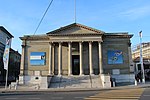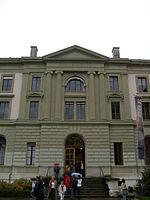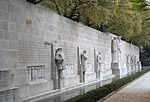Grand Théâtre de Genève

Grand Théâtre de Genève is an opera house in Geneva, Switzerland. As with many other opera houses, the Grand Théâtre de Genève is both a venue and an institution. The venue is a majestic building, towering over Place Neuve, officially opened in 1876, partly destroyed by fire in 1951 and reopened in 1962, after extensive refurbishments, which houses the largest stage in Switzerland. As an institution, it is the largest production and host theatre in French-speaking Switzerland, featuring opera and dance performances, recitals, concerts and, occasionally, theatre.During the 17th and early 18th centuries, Geneva was heavily influenced by Calvinist orthodoxy and it was not until the middle 1760s that the city agreed to the building of the Théâtre de Rosimond, Geneva's first opera house. Under the influence of Voltaire opera began to flourish at La Grange aux Etrangers and its successor theatre, the Théâtre de Neuve, both of which were located outside the walls of the city.
Excerpt from the Wikipedia article Grand Théâtre de Genève (License: CC BY-SA 3.0, Authors, Images).Grand Théâtre de Genève
Boulevard du Théâtre, Geneva Cité
Geographical coordinates (GPS) Address External links Nearby Places Show on map
Geographical coordinates (GPS)
| Latitude | Longitude |
|---|---|
| N 46.201696 ° | E 6.142709 ° |
Address
Grand Théâtre de Genève
Boulevard du Théâtre
1204 Geneva, Cité
Geneva, Switzerland
Open on Google Maps








